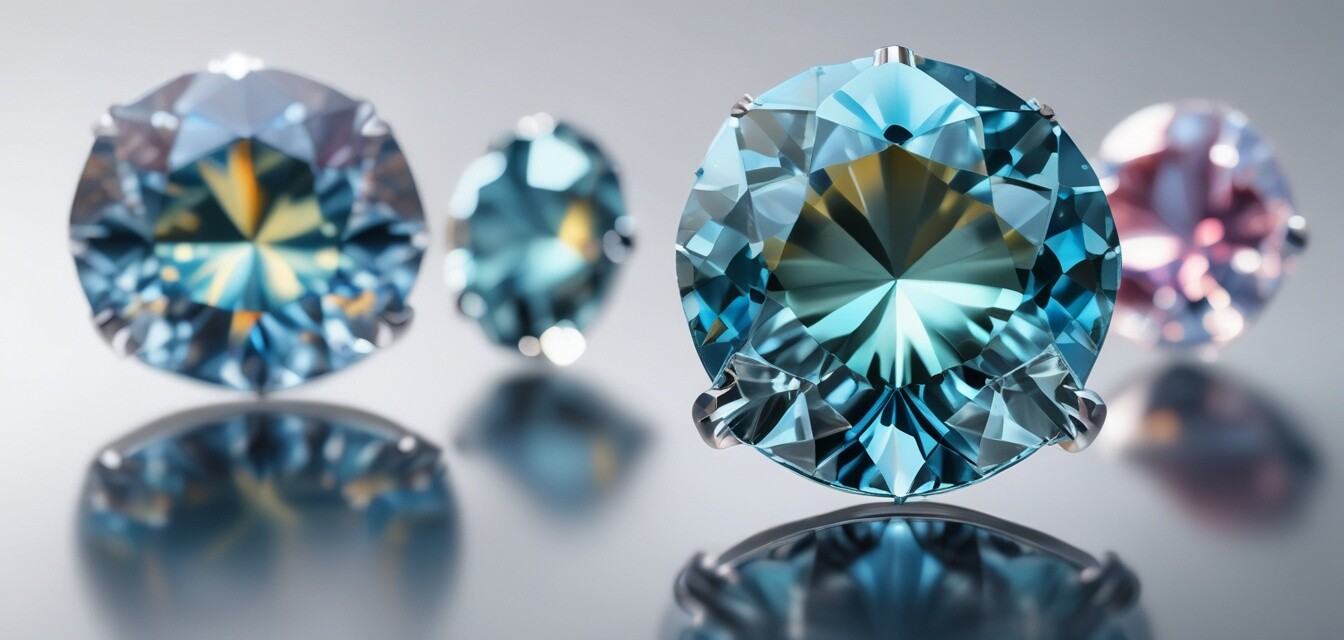
Understanding Moissanite clarity: A comprehensive guide
Key Takeaways
- Clarity grades in moissanite significantly influence its appearance and value.
- The Gemological Institute of America (GIA) system is commonly used for grading clarity.
- Understanding clarity helps you make an informed decision when purchasing moissanite jewelry.
- Higher clarity typically equates to higher value but finding a balance between quality and budget is essential.
When it comes to choosing the perfect moissanite for your jewelry, clarity is one of the most crucial factors that you need to understand. Clarity refers to the presence of internal inclusions or external blemishes in the gemstone, which can affect its overall beauty and value. This comprehensive guide will help you navigate through the clarity grades of moissanite and make informed decisions about your selections.
What is moissanite clarity?
Moissanite clarity involves the evaluation of visible imperfections within the stone. The clarity scale ranges from 'Flawless' to 'Included', and understanding these categories is essential for selecting high-quality moissanite. The Gemological Institute of America (GIA) provides a widely recognized grading system used to determine clarity across gemstones, including moissanite.
Clarity grades explained
| Clarity Grade | Description | Characteristics |
|---|---|---|
| Flawless (F) | Internally and externally flawless. | No visible inclusions or blemishes visible even under 10x magnification. |
| Internally Flawless (IF) | Has no inclusions visible under 10x magnification. | Minor surface blemishes may be present. |
| Very Very Slightly Included (VVS1 & VVS2) | Inclusions are very difficult to detect. | Only a skilled grader can find these inclusions under 10x magnification. |
| Very Slightly Included (VS1 & VS2) | Minor inclusions visible under 10x magnification. | Inclusions are not easily seen with the naked eye. |
| Slightly Included (SI1 & SI2) | Inclusions that are noticeable under 10x magnification. | Some inclusions may be seen by the naked eye, especially in SI2. |
| Included (I1, I2, I3) | Inclusions are visible under 10x magnification and may affect the stone’s appearance. | These stones may have significant flaws visible to the naked eye. |
Why is clarity important?
When purchasing moissanite, clarity plays a significant role in determining the gemstone's beauty and overall value. Higher clarity stones appear brighter and have less visible inclusions, resulting in a more aesthetically pleasing look. Here are a few reasons why clarity matters:
- Aesthetics: Higher clarity stones will appear brighter and more brilliant, showcasing their unique color and sparkle.
- Value: Clarity impacts the price of the stone, making it essential for consumers to find a good balance between quality and budget.
- Durability: Inclusions can make a stone less durable, increasing the risk of chips or breaks. Higher clarity generally means fewer potential weaknesses.
Finding the right clarity for your needs
Choosing the right clarity for your moissanite depends on personal preferences, purpose, and budget. Here are some factors to consider:
1. Personal Preference
Some people prioritize beauty over clarity while others may seek a combination of both. It's essential to examine the stone closely and determine what you find visually appealing.
2. Purpose of the Jewelry
If the moissanite is intended for everyday wear, such as a ring, you might want a stone with higher durability (and thus clarity). However, for occasional wear, you may be satisfied with a slightly lower clarity grade.
3. Budget
Higher clarity stones generally come with a price increase. If you're working with a limited budget, you may consider a lower clarity stone, especially if its inclusions are not easily visible to the naked eye.
Tips for selecting your moissanite clarity
- Always review your stone in different lighting conditions to see how inclusions appear.
- Seek certifications from reputable gemological laboratories to ensure the accuracy of the grading.
- Don't hesitate to consult a jeweler or gemologist for professional advice on clarity and quality.
- Consider factors like cut and color alongside clarity as they can also affect the overall appearance of a moissanite stone.
Pros
- High clarity moissanite reflects light beautifully, creating exceptional sparkle.
- GIA-certified clarity guarantees the quality and value of the stone.
- Clearer stones have fewer visible imperfections, elevating their elegance.
Cons
- Higher clarity stones often come at a premium price.
- Less clarity may deter some buyers despite a similar visual appeal.
- Limited clarity options can make the selection process overwhelming for some shoppers.
Conclusion
Understanding moissanite clarity is crucial for making informed decisions when selecting your gemstones. By familiarizing yourself with clarity grades, you can better navigate your options and choose the right stone that fits your style and budget. Whether you are looking for a stunning pair of earrings or a beautiful bracelet, clarity does matter, so ensure you pick a grade that corresponds to your personal preferences and wearability requirements.
For more valuable insights, check out our Buying Guides where we simplify the process of selecting the perfect piece of jewelry. Happy shopping!

